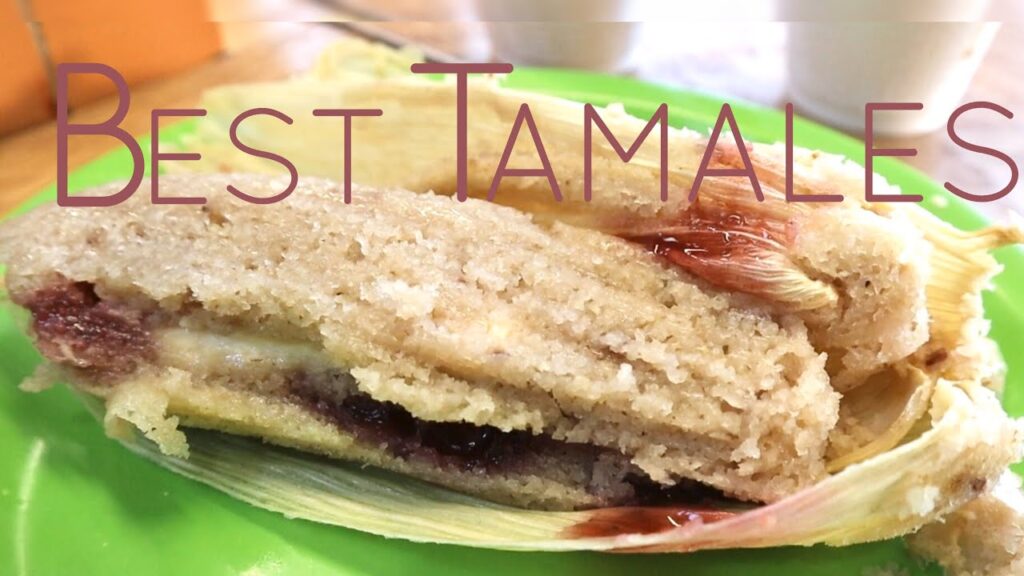Discover the Best Tamales in Mexico City
In the heart of Mexico City, an adventure awaits for those eager to explore the rich culinary landscape that this vast metropolis has to offer. Among the varied and vibrant dishes, tamales stand out as a beloved delicacy that embodies the essence of Mexican comfort food. This ancient dish, prepared with corn dough and wrapped in corn husks or banana leaves, has been embraced by generations and remains a staple in Mexican cuisine. As you wander through the bustling streets and vibrant markets of Mexico City, the quest for the best tamales becomes an adventure in itself, inviting travelers to discover the myriad flavors that the city holds.
Venturing into the neighborhoods of Coyoacán and Xochimilco presents an opportunity to experience tamales that boast a homemade quality, often prepared by local vendors who have inherited their recipes through generations. Here, the tamales are imbued with a sense of tradition and authenticity that is hard to find elsewhere. Each bite acts as a gateway to understanding the local culture and the deep-rooted culinary traditions that define Mexico City.
For those seeking variety, the bustling Mercado de La Merced offers a dizzying array of tamales, from the savory to the sweet, highlighting the diversity of this iconic dish. Among the stalls, one can find flavors ranging from the classic ‘tamales verdes,’ with their tangy salsa verde and chicken filling, to the more adventurous ‘tamales de mole,’ which are a testament to the complexity of Mexican cuisine with their rich, chocolate-infused mole sauce. The exploration doesn’t stop there, as seasonal specialties like the sweet ‘tamales de elote’ (corn tamales) offer a unique taste of Mexico’s vast culinary landscape.
Not to be missed is the tradition of ‘Tamaladas,’ a gathering where families and friends come together to make and enjoy tamales. This tradition is especially prevalent during the beginning of February to celebrate Candlemas Day, turning the act of tamale tasting into a communal and celebratory event. For travelers, participating in or witnessing a Tamalada offers a profound insight into the communal aspects of Mexican dining and the integral role that food plays in bringing people together.
As dusk falls over Mexico City, the aroma of freshly-steamed tamales fills the air, guiding night owls to street vendors and late-night eateries that specialize in these delectable parcels of corn, meat, and salsa. The night market scene introduces yet another dimension to the tamale experience, where one can savor the warmth and flavors of this comfort food against the backdrop of Mexico City’s vibrant nightlife. Every tamale in Mexico City tells a story of tradition, community, and culinary innovation, making the pursuit of the city’s best tamales not just a culinary excursion, but an adventure into the heart of Mexican culture.
Guided Tours to the Top Tamale Spots
Embarking on a guided tour to explore the top tamale spots in Mexico offers an unparalleled culinary adventure for food lovers. Tamales, a traditional Mesoamerican dish made of masa (a starchy dough, usually corn-based), which is steamed or boiled in a leaf wrapper, are a staple in Mexican cuisine. Each region in Mexico boasts its unique spin on tamales, presenting an array of flavors, fillings, and cooking methods that reflect the local culture and ingredients. Through guided tours, travelers have the exclusive opportunity to dive deep into the heart of Mexico’s tamale tradition, visiting renowned eateries, local markets, and even family homes where this iconic dish has been perfected over generations.
The tours are not just about tasting different tamales; they are an immersive educational experience. Participants learn about the history of tamales, which dates back to the pre-Columbian era, and observe firsthand the meticulous preparation process. From the intricate task of spreading masa on corn husks to the art of steaming tamales to perfection, food enthusiasts gain a deeper appreciation for this culinary gem. The journey also highlights the significance of tamales in Mexico’s social and cultural fabric, often served during celebrations and holidays, making them a symbol of communal joy and unity.
Furthermore, these guided tours are designed to cater to all preferences and dietary restrictions, showcasing the diversity within tamale cuisine. Whether you’re a meat lover eager to try tamales stuffed with savory pork, chicken, or beef, or a vegetarian curious about versions filled with cheese, peppers, or beans, there’s an astonishing variety to sample. Sweet tamales, filled with fruits, chocolate, or nuts, provide a delightful end to the gastronomic exploration, ensuring that every palate is satisfied.
What sets these guided tours apart is the chance to interact with the local tamaleros (tamale vendors) and families who have been passing down their tamale-making traditions for centuries. Visitors can ask questions, share stories, and even participate in the cooking process, offering an authentic glimpse into the lives of those who keep the tamale heritage alive. This connection transforms the culinary excursion into a personal and meaningful journey, steeped in the flavors and stories of Mexico.
Traditional Versus Modern Tamales
Tamales are a staple in Mexican cuisine, beloved by locals and travelers alike. The roots of tamales stretch back to ancient times, serving as nourishing food for Aztec and Mayan warriors. Traditionally, tamales are made of masa (a dough made from nixtamalized corn) and are filled with meats, cheese, fruits, vegetables, or chilies, then wrapped in corn husks or banana leaves. This ancient food item has not only withstood the test of time but has also inspired a world of innovation, leading to the creation of modern variations that cater to a broad array of tastes and dietary preferences.
Modern tamales have embraced the innovative spirit of culinary creativity, incorporating unconventional ingredients and techniques into the traditional form. For instance, some chefs and home cooks are now using ingredients like quinoa or plant-based meats as fillings, and incorporating flavors from other global cuisines, such as curry or barbecue sauce. Additionally, while the traditional tamale is steamed, modern versions can be baked, grilled, or even deep-fried, introducing a whole new range of textures and flavors to this age-old food.
Despite the evolution and incorporation of new ingredients and methods, traditional tamales continue to hold a special place in the hearts of many. For countless families, the process of making tamales remains a cherished tradition, particularly around holidays and celebrations. The communal act of tamale-making, known as a “tamalada,” is a time-honored social event where recipes and techniques are passed down from one generation to the next. It is this deep cultural importance and the rich, comforting taste of traditional tamales that keep them an integral part of Mexican cuisine.
The debate between traditional and modern tamales is not about which is better but rather about appreciating the diversity and evolution of Mexican cuisine. Both styles offer unique experiences: traditional tamales connect us to the rich history and cultural practices of Mexico, while modern variations celebrate innovation and the fusion of global culinary trends. As travelers explore Mexico, they are encouraged to taste both traditional and modern tamales, each bite offering a distinct story of Mexico’s past, present, and future.
The Art of Tamale Making
Tamale making in Mexico is not just a culinary activity; it’s a form of cultural expression deeply rooted in tradition and family heritage. This ancient skill, passed down from generation to generation, symbolizes the rich tapestry of Mexico’s history and the diversity of its people. Originating from pre-Columbian times, when indigenous peoples would prepare these steamed bundles of masa (corn dough) for feasts and religious ceremonies, tamales have evolved, yet they remain a staple in Mexican cuisine and a centerpiece in celebrations such as the Day of the Dead and Christmas.
The process of making tamales is both an art and a communal undertaking, often involving the entire family. It begins with the meticulous preparation of the masa, which is traditionally ground by hand from nixtamalized corn and then beaten with lard to achieve the perfect consistency. The fillings vary widely from region to region – ranging from savory options, like chicken with green salsa or pork with red chili sauce, to sweet versions filled with fruits or sweetened beans. This variety speaks to the creativity and adaptability of Mexican cooks, showcasing the country’s vast biodiversity through local ingredients and flavors.
Wrapping and steaming tamales is the final step, with each region having its unique twist. The most common wrapper is the corn husk, but in tropical areas, banana leaves are preferred, lending a distinct aroma and flavor to the finished product. The process of wrapping tamales is a delicate task, as it requires skill to ensure the filling is securely encased and the tamale can withstand the rigors of steaming. This communal activity fosters a sense of unity and celebration, as families gather around the steaming pots, sharing stories and laughs, creating memories that are as enriching as the food itself.
Where to Find Vegetarian and Vegan Tamales
In Mexico, a country renowned for its rich culinary heritage, finding vegetarian and vegan variants of traditional dishes might seem like a challenge at first glance. However, the increasingly health-conscious and diverse dietary preferences of both locals and travelers have given rise to a delightful variety of vegetarian and vegan tamales. These can be discovered in both bustling city markets and tranquil towns, offering a taste of Mexico’s beloved flavors without the meat.
Many local markets, particularly in cities like Mexico City, Oaxaca, and Guadalajara, have stands dedicated to vegetarian and vegan tamales. Ingredients such as mushrooms, zucchini blossoms, and poblano peppers often replace the traditional pork or chicken, wrapped in that distinct corn husk or banana leaf. To ensure these are wholly vegan or vegetarian, it’s advisable to ask if the masa (dough) is made with vegetable shortening or oil instead of lard, a common ingredient in traditional recipes.
In addition to markets, specialized vegan and vegetarian restaurants in metropolitan areas are also great spots to find these tamales. These establishments not only guarantee the exclusion of animal products but also tend to experiment with exciting flavors and ingredients, pushing the boundaries of traditional tamale recipes. Food festivals dedicated to plant-based diets are becoming more common, providing another vibrant avenue to explore the diversity of vegetarian and vegan tamales. Whether you’re navigating the charming streets of Puebla or exploring the coastal beauty of Tulum, the quest for the perfect plant-based tamale can lead you to discover not just food, but the heart of Mexican culture.
Tamale Festivals and Events
In Mexico, tamale festivals and events are a vibrant and delicious part of the country’s rich culinary traditions. These festivals, known locally as “Ferias del Tamal,” celebrate the diversity and ingenuity of one of Mexico’s most iconic foods – the tamal. Tamales, made from masa (a dough, usually corn-based) and filled with anything from meats to fruits, wrapped in corn husks or banana leaves, and then steamed, are a staple in Mexican cuisine. The tamale festivals typically occur around early February, coinciding with “Día de la Candelaria” on February 2nd, an important date in the Mexican cultural and religious calendar.
At these festivals, visitors can expect to indulge in an astonishing variety of tamales. From traditional flavors like pork and chicken in red or green salsa to more innovative creations like mole, sweet tamales filled with fruits, or even vegetarian and vegan options, there’s a tamal for every palate. Each region in Mexico boasts its unique tamale, making these festivals a fantastic opportunity for travelers to embark on a gastronomic tour of the country without leaving the festival grounds.
Aside from the sheer diversity of tamales on offer, these events often feature music, dance performances, and workshops where visitors can learn the art of tamale making. These interactive experiences provide a hands-on way for attendees to connect with Mexican culture and learn about the traditional techniques and family recipes that have been passed down through generations.
Furthermore, attending a tamale festival in Mexico is not just about eating. It’s an immersive experience that allows visitors to engage with local artisans, chefs, and families who take pride in their culinary heritage. Through these events, travelers gain deeper insights into the importance of food in bringing communities together and the role of tamales in celebrations and everyday life in Mexico. Whether you’re a foodie in search of the perfect tamal or a traveler eager to experience Mexican culture at its most vibrant, tamale festivals and events offer a unique and unforgettable adventure.


